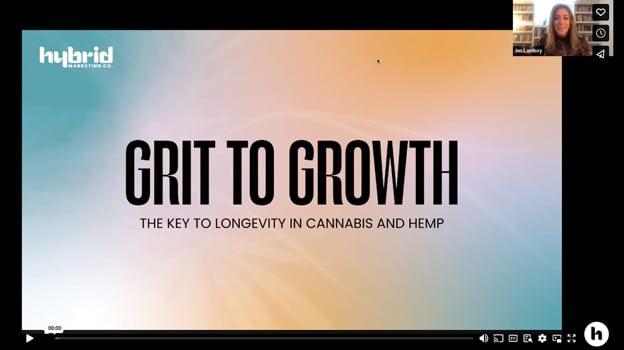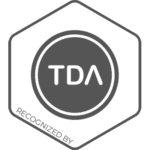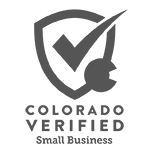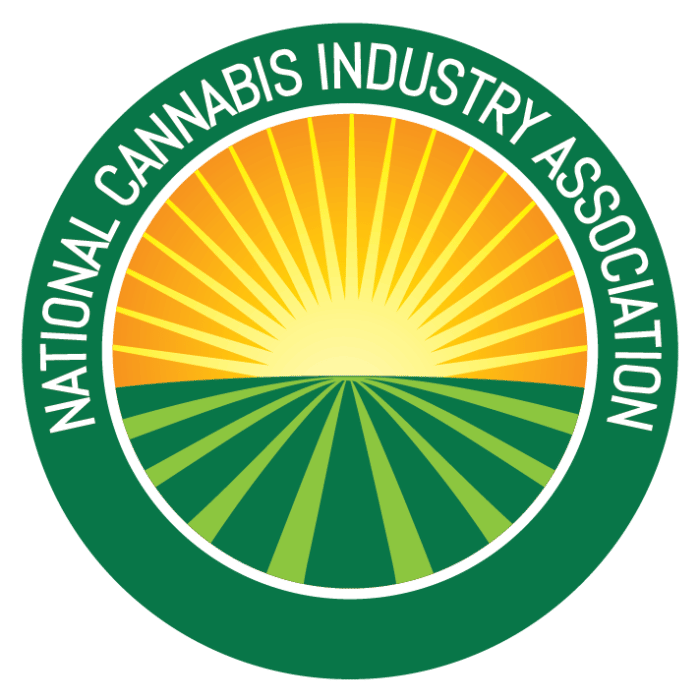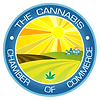Jen Lamboy: Hi everyone, and thank you so much for joining us today for our Grit to Growth discussion on the key to longevity in cannabis and hemp. I’m Jen Lamboy. I’m the director of Hybrid Marketing Co. We are a global business outcomes focused agency. We’re based in Denver. Our team has been working in this space since 2011 and we’ve been helping folks drive change in the areas of revenue risk, cost, cashflow, and asset utilization. I am joined today by two drivers in this space, Aaron Furman, he’s the program director of Control Union’s responsible Hemp Standard, and Kim Sanchez Rael, she is the co-founder and CEO of Azuca. I’m so super pleased that both of you could join me and join this conversation. I go ahead and pass it over to Aaron. I’d love for you to share with the audience who you are, who Control Union is, and the work that you all are doing in the cannabis industry.
Aaron J. Furman:
Put me on the spot. Okay. Thank you. That’s just a whole lot of information in a minute or so. Again, for those of you who don’t know me, I’m Aaron Furman. I work for a company called Control Union, primarily out of the North American office, Control Union USA. My background, I guess we should start with how I’m involved with agricultural supply chain management. Actually, I grew up on a small farm in upstate New York that was in the family for multiple generations. We privately raised a variety of livestock, animals, chickens, [inaudible 00:01:40], pigs, but the primary commodity off the farm was corn. Over the years I was too young to know about certain aspects of the industry, but I was able to see how mismanagement of farms, misappropriation of funds and things like that, could lead to unsuccessful outcomes that eventually lead to poverty.
Years later, I found myself in the agricultural industry via Control Union, which is a hundred plus year old company based originally out of the Netherlands. We have two primary offices. We are located globally. We operate in about 80 plus countries. The two main areas are the European office and our Brazilian office, which Brazil manages all of North America and South America and Central America. Again, we’ve been doing supply chain management or certifications, a lot of different sectors actually all the way to energy. We don’t just do farming. One of the areas that we do focus on is looking at high risk commodities and putting a game plan behind them for stabilization. Hemp is a perfect example of what we’ve been focused on for the last couple years. We’ve been looking at the industrial hemp value chain, supply chain, I won’t call it a supply chain yet, for quite some time.
One of the primary drivers was basic stability, looking at what transparency means for our network. Literally these networks are very incestuous in some forms, but we have in the countries that we operate 65,000 plus clients, a lot of them are some of the biggest names in food, retail, some of the biggest global brands. They’ve all been looking at hemp. They’ve all been loving the idea of participating in hemp. I don’t want to speak for them because they have their own sourcing strategy teams that can speak about their ESG goals, sustainability, and things like that. We do communicate quite often and we talk about how can we make this successful the same way we’ve done with a lot of high risk cotton, cocoa, palm oil, that we’ve developed voluntary certification schemes for and they’ve been quite successful.
My actual background isn’t in agricultural management or sustainability. My background actually comes from the aerospace industry. My classical education was aero eng with a double major in a kind of an unheard of thing back then, but it was called safety management systems, which kind of provided me the best structured approach for working as the lead on the hemp program because I acted more like an or I guess a title would be an organizational engineer putting process to the operations no matter the size of the location working with the farms, the different characters, the different actors involved, and there are a lot of different actors involved in this value chain. It’s very, very long. But, it allowed me to take an objective approach. The plant itself, I do believe in the plant 100%. That’s why I’m sitting here. That’s why I’ve been involved in these projects for some time now.
It has allowed me to remove the emotional attachment from the process of developing a standard to help move this plant forward, be it industrial hemp for fiber, a woven, non-woven, a feed sector, or even the medical cannabis. Looking at the active pharmaceutical ingredient, I know a lot of people don’t like hearing pharma involved with the plant, but we are looking at it as an ingredient for a few of the companies that we work in line with. We are looking at it as a primary ingredient or a secondary, non-direct ingredient. We are looking at the global supply chain, not just the regional level, which especially in the US I think that’s relevant. Each state is very much a regional level that’s kind of on its own.
We think that that arena is going to be changing soon. We do see federalization, we hope. We do want to implement what we built with our medical cannabis program, CUMCS. CUMCS is, I’ll put a sales in, CUMCS right now is allowing for medical cannabis to cross international borders in about 35% of the global market. These are big things that we’ve been focused on. The rest of it, it’s all water under the bridge and we just keep moving forward. High hopes. I appreciate you giving me the time to talk today and look forward to the discussion.
Kim Sanchez Rael:
You’re on mute, Jen. You want me to jump in? I’ll jump in. You’re on mute, Jen. Great to be here and thanks for having me here. I’ll talk a little bit about what is Azuca and what are we up to, and then what’s my role. Azuca really resides in this sub-sector of the cannabis and hemp industry that I call advanced formulations. Advanced formulations for non-inhalable cannabis. We do primarily edibles and beverages, but we also have formulations for topicals. Some people call this emulsions or nanotechnology, I don’t like those words or that language because that doesn’t really accurately capture. I think what this category is about today and what it really needs to be about in the future, which is how do we enable brands and manufacturers to bring the best possible products to the market. Cannabinoids are hard to manufacture, they’re hard to get into a formula in an edible, for example, that’s fast acting, great tasting, easy to manufacture, and scalable even with no interstate or international commerce. Right?
What we do is we solve that problem as an innovator. We create these advanced formulations and then we license them to brands and manufacturers all over. We currently have license agreements covering about 20 states, Canada, Puerto Rico, South America, we’re moving into Europe. Think of us as the Intel inside. If you’re a brand or a manufacturer and you really want to step up your game, your offerings, your differentiation in the edibles or beverage or topical space, we’d love to chat with you. We are not a hundred years old.
We launched the company in 2018 and so I’ll shift and talk a little bit about what’s my role. I’m co-founder and CEO. The other founder is Ron Silver, who is a chef in New York City. Ron is a lifelong lover of cannabis and he is a chef. Ron hated edibles because of the traditional edibles problem. They are hard to predict, they’re slow, they often taste bad. I partnered with Ron about five years ago to launch what is now. On that journey, I’ve done everything since this company, Azuca, was just a twinkle in our eye. Created the business strategy, hired the team, raised the capital, literally cleaned the toilets and done things like with our very first THC launch back in 2018, which was with a partner in Massachusetts. I was in the kitchen midnight on a Sunday night calculating batch specific potency results for batch specific label requirements. I’ve done everything in the company soup to nuts.
What I do today is I really focus on development of our product strategy, process strategy, and we’re fundamentally an innovation company. So our mission is to lead the innovation curve for advanced formulations for the industry. I’m always thinking about what’s next. What’s missing in product formulations? What problem can we solve for manufacturers and then bring it to them in a cost effective, very easy to manufacture scalable way?
That’s what I do. I come out of a tech and finance background. I’m a recovering venture capitalist. I was at Intel for seven years. Like Aaron, I have a lot of quality systems background. I approached this whole question from a scalability, manufacturability, quality systems repeatability perspective when I first jumped in. Ron is an artist, he’s a chef, and he’s a creative. We are like the yin and yang. Sometimes I call us the odd couple of cannabis, which those of you who know both of us would say, “Yeah, that’s kind of accurate.” That’s a little bit about Azuca and a little bit about what I’ve been doing in the company and the industry.
Jen Lamboy:
Awesome. You’re coming from two really different worlds. There’s the manufacturing world, there’s the standards world. We’re all in this industry together waiting for the next, let’s say external threat. We’re waiting for regulations to sort through. What are some of the risks that each of your organizations have managed, that you’ve each managed?
Aaron J. Furman:
I’m more than happy to jump in on this. It’s amazing Kim and I got some time to spend with each other yesterday and through past correspondence. Hearing exactly what was just stated is one of the driving factors behind us looking at both, let’s just call it cannabis because it’s going to get confusing hearing me talk about CUMCS, the Control Unit, medical cannabis standard and responsible hemp standard. I’m just going to refer to everything as cannabis right now unless Levi’s is listening and they want to talk about hemp fiber and then I can change it up.
But exactly what Kim had just mentioned is one of the driving forces. How do you create something that’s repeatable? How do you create something that’s quality? This is a big misconception. This is something I don’t fight with, but there’s definitely a devil and an angel on my shoulder every time I have this conversation going. “Don’t say this, do say this.” What I mean by quality is I’m not saying your farm or your greenhouse or your indoor grow doesn’t create quality. Just like when I go to a local farmer’s market, it is the best apple I’ve ever had, but I’m not going to see it at a regional or a global level retailer most likely because they have a different quality standard that applies to them. It’s still a delicious apple. It’s still amazing. I won’t get the same thing at the store. The apple at the store, insert cannabis here, meets exactly what they’ve defined with their sourcing strategy.
When we talk with our networks, when we talk with our global teams, when we talk with our regional directors, when we’re developing these programs, we’re thinking about all these factors. What’s best for the farmer? We don’t need the land to grow, we need the farmers. Farmers are our number one priority, but so is the entire supply chain. We want to make sure that every single time it moves, that piece moves along its product life or its supply chain that not only is the agricultural certification communicating with the manufacturing, but the manufacturing, that’s transferring over to putting on label claims. Then at the end of the day, the consumer can look up the package and they can have full trust in the transparency of everything that happened. They know exactly what the life of that plant was as it turned into the product.
Cannabis has created some roadblocks, nothing big, but by setting standards we establish what those standards are for hemp production, processing, distribution. They’re all based on best practices, globally accepted best practices. As the industry matures and as it moves to a global globalized platform, we know that somebody in Africa doesn’t have to worry about it, because everybody’s kind of agreed, this is what we consider the best practices. We’re not using Eagle 20. That’s a big one. We know that there aren’t going to be contaminations. RHS is a little bit different than CUMCS. RHS is a quality program. CUMCS does implement quality and safety. It’s a much more controlled environment. But, we made sure that those two programs communicated with each other because we do see with teams like Kim’s who are saying, “Look, we have a relationship with a medical cannabis grower or a THC dominant grower.” That square meter that they’re producing that plant on has a much higher value for THC dominant plant than for a hemp plant.
When Kim is formulating for her teams and they say they want to do something that’s maybe a sleep aid, and they say, “We want to implement a minor cannabinoid into it.” Well, you have this beautifully controlled THC oil that you’re using and now you’re implementing some minor cannabinoids into it, but you don’t know where they came from, but your label is still saying that, “Look, this comes from a highly controlled arena. Trust us.” We just want to ensure that that trust is continued. By creating these standards, we can say, “Look, this meets and exceeds those minimum expectations.” It provides a common framework that all the participants in either one of the industries can work with, is prepping for the eventuality of crossing international borders.
I won’t even talk about the issues that we’re going to run into locally, regionally, state-wise, with MSOs and all of that. It’s like they’re doing great right now, but when the borders open up, it’s going to be a little bit different. The big part is promoting transparency. Everybody who talks to me, I’ve said the same thing, dozens if not hundreds of times, people get tired of me hearing it, but it’s the most important aspect. At the end of the day, the farmers are very important. Consumer is who we’re worried about. Transparency is how we have recall processes. We know where everything is going. We know, our team from Control Union, the complexities of a global supply chain. We deal heavily in the textile industry, for example.
When a natural fiber plant is being processed into a textile that’s headed for the garment industry, which is going to have a retail brand put onto it, there are so many tiers involved with that, and it’s very, very hard to keep an eye on every single aspect. That’s what we do. That’s what we do very well, and it’s one of the key items that are missing. When Kim’s getting a product sent over to her to one of the businesses that she’s working with, not only does she want the same product every single time, but chances are good, her consumers are going to say, “I really support ESG goals.” It’s not something that’s kind of a thing anymore. It’s something that’s very, very real.
We create these programs that are sustainable. We ensure that there’s ESG goals put into it. It doesn’t make sense necessarily for US market, but when we’re looking at a global program, social compliance issues are a big thing. We can look at any industry that we’ve ever worked with. Palm oil is a perfect example. High risk, very, very high risk. Overnight sensation, overnight projections through the roof, sounds very similar to hemp if you think about it. All of a sudden there is indigenous people being removed from their lands, deforestations happening. There’s indentured servitude issues that are happening. These are the things that we’re prepping up for when we put a logo on something. It provides assurances. It really does. It provides a way for buyers to have confidence in their products that they’re purchasing, that they meet those sustainability, safety I don’t want to say for the RHS program, it is more of a quality program, but for the CUMCS program, it’s safety and quality.
It’s a way of reducing risk. It’s a way of putting in recalls into place. It’s a way of handling and tackling liability issues in the event of a recall. It’s building confidence in that supply chain. I really think confidence is one of the things that’s missing, especially from hemp. I know that’s a dangerous thing to say and it’s going to raise a lot of issues, but I don’t think the entire base that we’re capable of touching has full confidence in what the people are trying to do. How do you prove that confidence? Well, you show them every single step from the seed genetics to the plant, the crop going in the ground, to the mitigation of the soil, the transportation, the processing facility that’s actually been … We’ve done a lot of work with processing, especially for cannabis and hemp. There’s only one that I’ve seen in the US that’s CGMP-210 ICH-Q7A, pharma grade GMP, looking at cannabinoids as active pharmaceutical ingredients.
We only need one or two of those because they’re capable of handling it and they’re capable of doing batch allotments and they’re capable of putting recalls into place in case something happens on Kim’s side. That’s a long spiel, and I didn’t mean to take over that much time, but that’s where we’re coming from and that’s supporting Kim by supporting the farmers, by supporting the processors, by focusing on what’s most important to the consumer, whether we like it or not. It’s a health and wellness product for most aspects. Even with fibers, make sure there’s no chemicals in it. Make sure if it’s organic, that it’s actually organic. It’s not a state level organic or an NOP. We’re looking at the whole system.
Kim Sanchez Rael:
I’m going to jump right in and really emphasize what Aaron just said around trust and credibility in the supply chain, because one of the things I think a lot about is there’s a lot of chaos in this industry. We all know that. We’re all living it. Ultimately, the consumer who picks a product off the shelf has to know that they can trust that product, they can trust that it’s clean, that it has a good supply chain as Aaron was saying. They also need to be able to trust that they’re going to get the effect that they are promised on the label or in the marketing and that it will be the same every time. I really believe that in terms of product quality and product consistency for the consumer, that a rising tide lifts all boats. It’s about really delivering that predictable experience for consumers every time regardless of what the product is.
In that process, like every formulation is not created equal. Every manufacturer is not following the same level of quality standards to Aaron’s point. Even in our category, all advanced formulations are not equal. I’ll give you an example of right now the beverage industry in cannabis is a relatively small sub-segment of the industry. I personally think it’s going to be one of the fastest growing for all kinds of reasons, it’s a substitute for alcohol, people are used to drinking, having a beverage.
Right now, there is incredible inconsistency in formulation in the field. I don’t think there’s transparency on, for example, potency, degradation over time. If your can, I don’t mean Can the brand, if your beverage says five milligrams in this can, is it really five milligrams, right? Well, it depends on how old it is. It depends on what formulation you used to process your cannabinoids because there’s a lot of data on the cannabinoids disintegrating and adhering to packaging. It also depends on if that’s an aluminum can or a glass bottle or a tetra pack. The manufacturers and the formulators like us need to continue to up our game on collecting the data and sharing the data transparently on how do you make sure that when the consumer pulls that beverage off the shelf, that it is delivering exactly what the label says it’s going to deliver.
I think there’s a lot of good work going on in the industry around that set of risks and the risk being the consumer’s not getting what they think they’re getting or they’re getting a different experience from brand A in one state versus another state or from one batch to another batch. I think we’ve got a lot of work and good work going on to mitigate that risk. I just wanted to agree with Aaron. I think it’s really important to bring well established quality standards and systems into the cannabis industry, and because it’s still largely a very distributed industry a challenge because some of those things are expensive to do.
The other risk I was going to talk about, I’m going to shift gears entirely because I’m a startup person and the big risk I think in cannabis is all about cash. It is cash management, it’s raising capital to fund your enterprise. It’s managing that cash so that you don’t run out of it and really having a thoughtful process to think about your capitalization strategy and your operations. And I think there’ve been, there’s blood all over the floor in this industry. People who’ve raised hundreds of millions of dollars and left investors with zero. That makes my blood boil. Right? Because I think a lot of that was downright irresponsible. There is a lot of risk and we all take risks in this industry, but you also have to be really thoughtful about how you manage cash.
I’m going to give an example from my experience that I think we did really well, and I’m going to tell you about a mistake that I think we made. One thing that I think we did well was we stayed asset light for a very long time. We launched in 2018, but we did not have a true facility of our own until 2022. We really were committed to the asset light partnership model. Now, we were virtual before Covid hit. We didn’t have an office. How did we do what we do, which is actually working on a physical product without a facility? Well, we did some crazy things. We subleased a licensed kitchen on the night shift when nobody else was there to come in with our team and do our lab and our early production work.
That was phase one. Phase two we, again, subleased a portion of somebody else’s facility that was licensed that we could operate in. We actually had our own 300 square feet. We did so much, my team, they’re amazing, with a very limited amount of resources. That is what enabled us, I think it forced us to be innovative. It forced us to think of our customers, which is you’ve got to be able to do this with limited resources. You have to be able to scale this without having a different piece of equipment for every product category, for example. That asset light business model served us really well. I think I’d encourage anybody coming into the industry or pivoting their business model to really think about what is the most asset light approach I could take to the business I want to launch?
Which again gets to being about a lot of partnerships. I think we did that well. We worked with partners really well. Another risk that we all face is regulatory risk. That’s kind of a no-brainer to talk about regulatory risk, but we made a business decision that I think was a bad decision when the 2018 farm bill was signed into law. We were gung-ho for hemp CBD products being federally permitted. We were expecting an affirmative product framework to come out of the FDA. We thought it would probably look like the supplements framework. We positioned straight into that and we invested a lot for us because we were an early stage company at the time into developing a line of hemp CBD consumer products. Then, Covid hit and capital was tight and it’s very expensive to launch a brand, as you all know.
We really had to put that on life support and then back burner it. We learned a lot from that process, but it’s not something that has generated an economic engine for our company. It’s 1% or 2% of our revenue now. All of our business is really built around the model I talked about earlier, which is licensing these advanced formulations to brands and manufacturers. We got that wrong. We got that wrong. We made a bet on a regulatory change that seemed so close. Congress had passed the law and the president had signed it. Here we are 2023, five years later, the Farm Bill is up for reauthorization and we still don’t have an affirmative framework for CBD in food or supplements, which is the category we play in. Those are some of the risks that I think we ran into head on. Some of them, we made a great call. Some of them we didn’t make a great call.
I would say to everybody, “It’s all about cash.” You have to manage your cash, you have to have a practical cash management plan, and you have to know your ecosystem. We raised a little bit of investor capital. We don’t have any institutional capital, but right as Covid was hitting, we did go out to attempt to raise a series A and everybody would take the meeting. Every institutional VC in cannabis would take the meeting and say, “What you’re doing is really cool.” But none of them had dry powder either. Dry powder being in the investment world being actual cash to invest. There were a lot of funds that really didn’t have cash to invest. To say the investment ecosystem was anemic, it was an understatement. I think we’re in another cycle of that now in cannabis, and it’s really difficult.
Understand your cash. Be realistic about where your cash is going to come from, both from an investment perspective, bringing in outside capital and from an operating perspective. I was a VC for a long time and I’ve seen so many unrealistic hockey stick projections and cash generation scenarios. You need to be thoughtful about it. There’s a ton of information available online about how to raise cash. You can Google that and there’s great frameworks, but really be thoughtful about your business plan and then disciplined, disciplined, disciplined in your operating execution to your plan. Then if it’s not going well, I mean you have to pivot, pivot hard. That could be really challenging.
Jen Lamboy:
Yeah, thank you. Go ahead Aaron.
Aaron J. Furman:
I was just going to say just like any other crop, cannabis and hemp requires stability. They require sustainable supply chain to ensure that long-term success. I hear it all the time from the farmers. “We don’t have direct access to financing.” Incumbent banking, that’s a big one. It was great to see at a hemp show last week, First Citizen’s Bank was stepping in and I got a chance to sit down with Ryan and his team and talk about it, and we both agreed it was kind of like love at first sight. When he asked me my thoughts on it, I said, “Look, there’s liquidity available to these markets. There is just no risk management.” And banks don’t generally provide financial support for hemp, sorry, medical cannabis a little bit different, recreational cannabis. This is a good opportunity to start getting ready for what’s the eventuality that’s going to happen?
Those markets are going to break open and there’s a need for the banking. When you look at any global agricultural commodity, I know bad word to use, commodity, but let’s be real, global banks always played a significant role from the spice trade, to cotton, to palm oil, to cocoa, to coffee, banks provide financing for agricultural producers, they back traders, they support processors, they provide an entire range of financial services. They allow for hedging, they allow for futures contracts. There are key things that are missing for banks to facilitate trade finance I think specifically for hemp. One of the big issues that I see all the time is I hear the term broker thrown around. Brokers play a huge role in agricultural commodities. They do. Traditional brokers, when dealing with an agricultural crop, they’re held to standards. Commodities Exchange Act, regulating the trading of commodities futures. Looking at CFTC, it’s the same thing. There’s agencies in place that are looking at these things saying, “Look, they’re essentially best practices.” But we’re also looking at anti-money laundering regs. Know your customer regulations. State and local regulations that say you have to be bonded and insured.
There’s an ethical standard that plays in that, without those with, if we keep allowing for hemp brokers to use the term that moniker, but we don’t hold them to the standard of other traditional crops, banks are looking at it as suspect. That’s just one of a lot of different areas specific for financing in crops. Banks are sitting on the sidelines. They are ready to go, but they need that risk management mechanism in place. Here, I’ll sell what we’re doing. That’s one of the things that we’re really focused on because at the end of the day, when you participate in one of our programs, it does, it opens up our network, not all networks. I really do think voluntary certification schemes, scheme is not a negative word, these schemes allow for access to networks.
Who you’re aligning with, make sure that you share common values the same way we do with all of our purchasing. The same thing should happen when you’re trading your crops. Make sure that the network that you’re participating in shares those same values. If you’re spending time and energy on making sure that claims are substantiated, and that runs rampant in this industry as well and that’s one of the other things that financial institutions are weary of. You can’t say it’s a stressed watershed management tool, the production of hemp, when you’re using flood irrigation tactics. You also can’t use good intention on that. You have to prove to these networks that you’re actually putting mechanisms in place to validate what you’re putting out to the world.
When they put on a claim on a label, the big retailers, they can’t go off of good intention. Neither can the banks. We love the plant, that’s why we’re in this industry, but the reality is you have to have validation of your claims, you have to have transparency of how you came to those conclusions. Typical scientific method, ask a question, create a hypothesis, formulate a conclusion based on observations that you … It’s no different in any other commodity. I think once we put these mechanisms in place, which we are working on, they are very, very real. I think RHS, the Responsible Hemp Standard, which was literally created by the industry for the hemp industry. A company called INCCert out of Colorado came to us five years ago and said, “We see something bad happening. We’ve worked so hard to create this economic opportunity for everybody.”
Adrian Zelski, he literally came to me, I remember we were at MJBiz, he’s my client, and he said, “How do we do this?” I was like, “We look at it from a different lens. We need to change the optics because what we have to do is we have to create assurances for banking that allows banking to participate with the farmers.” We’ve done this before. Hemp isn’t special or unique in regards to that. I know it’s special and unique, but when we’re looking at the global supply chain, no different than any other crop. We have these mechanisms in place. Why have we been avoiding it? Regulations aren’t there. Ambiguous at best. I literally, I’ve read the Marijuana Taxation Act of ’37, which technically didn’t really prohibit the plant. It just said you have to pay a tax and made it unobtainable, but it’s almost identical to what was created in 2018.
Again, it was just a tool of putting too many roadblocks in place and focusing on the wrong areas. We aim to change that. It’s not the first time a global market has allowed for voluntary certifications for people to say, “Look, we’re going to participate in this because we don’t really like what you created.” It kind of forces the hand. I do see banking happening. I understand when Kim says, “Are you looking at financial security?” That’s also one of the things that we look at as well. I just wanted to put that in there.
Jen Lamboy:
I can add from our perspective, because as a marketing agency, we’re working with folks throughout that whole supply chain. Everyone from seed to opening the doors in emerging markets. If you’re a new dispensary in New Jersey, LED lighting, if you’ve got an indoor cultivation grow, and what we’re seeing folks more and more want to invest in is figuring out, well, is something like marketing worth it? Is the messaging worth it? We’re having to tighten our belts a bit. What’s the most impactful thing we can do as an organization who’s really trying to make it not this year, but for three years, five years, 10 years, 20 years? And really for us, what we’re seeing again across that full supply chain is folks really need to get really clear on their message. Whatever they are creating, who is it that they want to get in front of? Because that message really changes between if you’re talking to a consumer, if you’re talking to even like sub-segments of those consumers, if you’re in the B2B space.
What often happens, and we can move into more of an investment conversation too, but we’re seeing that folks are just saying, “We want to serve everybody. Everybody who will buy.” Of course it’s a watered down message. What we encourage with folks that we work with and partners as well is get really clear on who you are, who serve, and what it is that you’re offering and how it’s really different than anybody else. If it’s not really different, then how can you really mature your organization to have something that is viable and unique? Does that mean working toward an organization that’s creating a standard for it? Is it aligning with an organization that really has a solid reputation and works strategically with partners who are also with that longer vision? I just want to maybe even segue into what are the things that your organizations have invested in to make sure that you’re here today and that you’re here 20 years from now?
Kim Sanchez Rael:
I’ll jump right on that. One of the things that I think a lot about is frameworks. To your point, what can you really do? What can you do that’s differentiated? One of my favorite frameworks is called the Hedgehog concept. It was written as part of Good to Great, the book by Jim Collins a couple decades ago, but really a classic. It’s got three circles and you search for what’s the intersection. One circle is what can you be best in the world at? What are you passionate about? What can drive your economic engine? In order to be effective, you need to find that place. What we think we can be best in the world at is really creating these advanced formulations and staying on the cutting edge of that. I use technologies a lot because I come out of the tech world, but our first formulation was the 286 computer chip, then we launched the 386 and then the 486 and the Pentium. Really to stay ahead of the innovation curve is something we’re going to be best in the world at. Right?
We’re not going to be best in the world as a high volume manufacturer of gummies. That’s not what we do. We provide a service and a product to people who do that, like water brands. I agree with you a hundred percent, Jen. Focus on what you can be differentiated at. One of the things that I’ve heard some news recently of some large organizations in cannabis actually shutting down their R&D for cost savings, like letting go an R&D team of 10, 20, 30 people. Well, maybe that’s not what that organization could be best in the world at, but you can outsource that to me and we can have a partnership. I think that in wherever you are in the cannabis value chain, to really think about that intersection between what you can be best at and something that drives your economic engine. To my point earlier, you’ve got to manage cash.
The other thing that I think about a lot, Jen, is what we call bullets and then cannonballs. Right? You don’t necessarily know what’s going to work, especially in this crazy chaotic industry. You try a lot of things. We call those bullets, low risk, relatively low investment. Then you see what the market wants, you see what sticks, and then you double down resources and team resources on those things. I think that’s also a really useful tool for companies in this space to don’t put all your eggs in one basket until you know it’s the right basket to put the eggs in, which is the bullets and then cannonballs framework.
Jen Lamboy:
[inaudible 00:42:30].
Aaron J. Furman:
From our side, it’s hard to have this conversation. I don’t think I contribute to the 103-year legacy that well. Whatever our teams have been doing. I know they do it quite well. They’re in a lot of different industries. One thing I know we do focus on is supporting the farmer. That has always been, we’ve audited hundreds of thousands of farms from animal rights to just basic documentation practices. One thing, some of these standard, let’s talk about CUMCS. One thing CUMCS is very, very good at it, it’s a great reduction tool for social conflicts. It allows community engagement. Know your neighbor programs. It improves relations with those stakeholders that we were talking about from governments, NGOs, societal groups, buyers, financial institutions. Because again, transparency equals assurances. It’s that simple. When you actually have a dedicated third party certifying body that’s stepping in, that is well known throughout all these financial institutions, they trust that those are relationships we have built over a very long time. We’ve done it time and time again.
When there is some conflict that arises because of bad social media posts, we don’t rely on our good intentions. We don’t rely on our word, we rely on documentation. And there’s always going to be that paper trail there. Transparency is always something that we work very hard with the farmers on. We have to prove these claims that you’re making. It’s non-starters. There is too much information readily available in our pockets. It’s very easy to say that you’re doing something, it’s not as easy to demonstrate it. It’s not even harder to document it. With the right training, it becomes fluid, very fluid. For CUMCS, for example, we don’t expect the US to adhere to these maxims overnight. What do we do? We literally take all 22 of the chapters involved in the guidance documents and we create seminars that are, most of the time we offer them, if not pro bono depending on the team for relatively cheap.
I know the consultants don’t like to hear that because they’ve been making their money off of providing services but essentially we allow a team to come in and say, “Hey, we want to get refreshed on documentation procedures or managerial procedures.” Yvonne Chouinard, like when Patagonia came out last year, it literally brought a tear to my eye. I’m going to butcher the quote but, “Mother Earth is our only shareholder.” That is so important no matter what, at the end of the day. Our programs help with pesticide reduction, herbicide reductions. With chemicals going through the roof, there’s some plantations out in Indonesia that we work with that we’re talking about a half million a year in cost savings. Accident reduction rates, that’s a huge one. Those are those little costs that people don’t think of when they’re starting a business. What happens if something happens?
Attrition rates. Employees love knowing what their roles are. In the startup world, we always hear, “I’m wearing multiple hats.” Well, you know what? The person who’s making 1$5, $20 an hour doesn’t want to wear multiple hats. They want to be told what to do and they want to know that when they do it and if something pops up that the team’s working with them. It’s kind of that [inaudible 00:46:17] Swiss cheese model. It starts at the top, trickles down. Those are all the aspects that we try to improve. There’s numerous other ones. Again, CUMCS has got 22 chapters. Everything from knowing your roles to how you apply labels to what your claims are, to how you’re segregating, how you’re creating these models, what transparency looks like, what recall processes are. At the end of the day, they’re all to help the farms, help the processors, help the employees and really grow from there.
It’s amazing what a positive attrition rate for your farm is. be it a full-time employee, part-time employee, a contract employee, a seasonal worker, when they come back year after year, all of a sudden accident rates go down because they’re so familiar with the process. They’re not being put on a tractor that they don’t know how to operate and running over the person that’s unloading a pallet. It’s those little things that start adding up. I think if the industry stopped, I’ve seen, what’s that old adage? Stepping over pennies to pick up a dollar. The pennies add up after a while. Especially when you’re strapped for cash or you are literally operating just off of liquidity from an investor, not to mention how it helps save investors. I think we’ve all seen, especially the cannabis industry, there are those players that are very good at bouncing from one investor to another.
We put some brakes on certain situations and help everybody out in that supply chain. That’s how supply chains grow. That’s how we create the supply chain. Yes, we are that counterculture to the counterculture, which essentially makes us the establishment. Not a bad thing, especially when everybody’s kind of prospering. We can look at any other supply chain model. I always revert back to palm oil because it’s a great example.
The numbers were almost overnight for non-certified to certified. It went from $10 a liter to $25. There was almost, in certain instances we saw with segregated models, a 5x increase in pricing because brands are willing to pay as long as they have the full story. The global brands aren’t going to chase to the bottom of the barrel with the bottom of the dollar. You’re not going to see them going, “Hey, player X just offered 120 for a liter of blah, blah, blah oil. We’ll give you 110.” They say, “We’ll give you 1,000. Just make sure every single thing is there. No excuses, none. No excuses. This is it. We will give you top dollar because we’re paying for a service. Now, if you can’t do it, then we’re going to go to the people that can.” Those are the networks who are looking to build up.
Jen Lamboy:
There’s so much that I want to comment on, Aaron, that you just mentioned. Of course, Yvonne Chouinard, you think about the investment that he’s made, even with that statement around the share the shareholders, the planet, focusing on not only our community, the external communities, the planet, we’re thinking about ESG. We’ve got one of the organizations we work with out of Alaska, Uncle Herb’s Dispensary, is using exactly that model where they’re investing in the community. What’s interesting is they’ve got multiple stores, they invest in their team. As they grow they’re kind of bumping up. Everyone’s learning a skillset that they didn’t have when they first entered. What’s fascinating about them is that it’s so true to who they are. They’ve got investment in the community. Yes, they’re a dispensary. Yes, they’ve got a sales model. Sometimes I’m like, “Which organization are you? Are you so pro community or are you so pro this industry?”
It’s exactly who they are as an organization. What I’m thinking about when you’re saying in investing, and we’ve kind of listed a few different things like business maturity, resources, maybe it’s technology, maybe it’s messaging and marketing. A big part of that is the community as well. I want to segue a little bit into ESG because I feel like that’s where we’re almost like on the crux of or on the edge of really being able to sink into that but we’re talking about organizations who are in many ways just trying to make it through the year or make it through the next two years. ESG in many ways seems to them like a luxury, a nice to have.
I think eventually we’re going to get to the point where that is, and maybe we’re already there where that’s a must have. I just wanted to hear from both organizations. I know of course with standardization of the supply chain there, that’s exactly the end game. Kim, I’m also wondering from your perspective too, do you see that in your space as well? Is there investment with among peers, your organization into not only ESG, community? Yeah, that’s just my question. I just want to know what you’re seeing as well.
Kim Sanchez Rael:
Absolutely, but though a lot of times I don’t see the ESG label on it, but I think that certainly most of the brands and companies that we partner with are actively investing in their communities and their teams and diversity. One of the only things that we really try to do in every single conversation internally and with partners is we have a core value of helpfulness. In every conversation and every interaction, how can we be helpful? Whether it’s to our colleagues in our own team, whether it’s to our partners, whether it’s to the communities that we live in, we really try to embed that core value into how we operate. We’ve partnered on Last Prisoner Project fundraisers and events, for example. That’s just the tip of the iceberg. I think it’s just a stance to that. This is about a lot more, although I talked a lot about cash earlier, if your business doesn’t survive, you can’t be good corporate or planetary citizen. We just try to always take a stance of helpfulness.
Aaron J. Furman:
I love it. I do. I do.
Jen Lamboy:
It comes down to, it comes to the core values of your organization as I was saying, knowing exactly who you are, because I feel like when you have that framework of this is who we are, then when big decisions, big things, external risks, new laws, whatever come your way, you already know this is exactly how we’re going to decide what to do next because this is what we’ve always done. This is who we are as an organization.
For us, Hybrid, our team is very much in line with the values that we share as an organization, but also what we’re looking for in the industry going forward. I think also it’s part of the reason I really wanted to chat with both of you today is because I see that in your organizations, I see that in you both as individuals and drivers in the space. In many ways I feel like our work is cut out for us, but certainly this is the time and place to start connecting with the folks who really are the drivers with business maturity when we’re thinking in terms of longevity, resilience, it’s who else out there is doing it? I’m so pleased that now you all knew each other better.
Aaron J. Furman:
Because ESG is kind of, we built it into all of our programs. I know we have to jump off, but it’s important. I walked into a hemp focused trade show last week, and the first one, the first breakout room that I participated in was in ESG strategy. I went, “Oh my God, this is incredible. We’re seeing the narrative change.” That was it. It was a great 45 minutes, never talked about again. I think it’s important that we start recognizing that if you are looking to attract buyers, you need to meet their sourcing strategy goals. In all corporate brands, generally ESG, from what I see, it’s under the marketing department. There’s an ESG department, and then it goes to their sourcing strategy. It’s real, it’s here. It’s not going anywhere. If you don’t want to participate, you don’t have to, hence voluntary certification.
The reality is these brands can’t just compete on good intention and passion alone. If they want access to those areas, reach out. LEVIA Brand in Massachusetts, I’ve been having conversations with them. Literally, I’m a part of their team for seven years. We’ve strategized. For seven years. They’ve been looking to build up, it’s a cannabis beverage brand. Troy and I, he’s family almost. He just reached out one day and said, “How do we start getting ready for the eventuality of globalization?” I said, “Yes, this is what we do. I’m excited about this. We have to start looking at your core mission. We need to change the company culture.” The company culture has shifted from good intention and wellbeing and heal the world to include that but looking at the strategy that actually puts the claim on. When Federalization in the US does happen, I have a feeling they’ll do pretty well. At least I like to think. I’m pretty good at what I do.
Why I’m saying that is reach out. I’m not going to just drop a bill at you. Let’s open up the conversations. Let’s start the dialogue. Let’s find out, send me a cup of coffee, maybe I’ll send you a free link for a CUMCS class. I don’t know. I’m just kidding. If I like you, I’ll probably just let you in. There are a ton of opportunities out there because we are investing in our network. Our network is looking to create a cannabis supply chain. Our network wants to be able to say, “We have a facility in Argentina. We’re running low on product. Who meets the exact requirements of what we’re doing and can we ship it across the borders?” And we go, “Yes, we can. We built that for you. You can have full confidence in what you’re doing. You won’t have to recalibrate your machines.” Engineering background, it’s a pain in the butt. It takes time. It does a lot having consistency in the product.
ESG, sustainability, social compliance, those aren’t terms that are politicized. Those are real life scenarios that have to be met if you want to participate at that next level. I love it. Do we have four more hours to talk about ESG?
Kim Sanchez Rael:
Four more hours.
Jen Lamboy:
No. I’m going to share a screen real quick. Aaron’s saying reach out, there’s his email address, Kim’s email address as well, mine also. And we’re encouraging conversation. We’re encouraging connectivity. These two, they’re in it. They’re in it, they’re doing it. They’re driving it. Connect with them, look them up on LinkedIn, follow them, follow their organizations. I’m going to pivot over to speaking of organizations to follow as well, we’ve got a couple webinars coming up next month and then the month after, so May and June, we’re looking at the emerging markets and really trying to provide a playbook for them. This is with an organization called Tenax Strategies. They’re out of Boston. The first one is really kind of looking at from concepts to commence operations, really opening your doors, how to get there, exactly how to get there with success, and kind of have that plan for and roadmap for success.
The other one that we have in June is a continuation almost of that one. Once folks have been in the space for let’s say one to five years now, what does compliance look like? What does it look like if you want to exit? We’ll talk about both of those areas as well with two brothers, Greg Dagostino and Peter Dagostino, both of Tenax Strategies. Yeah, I just wanted to also say thank you, thank you, thank you, thank you. Thank you to you both. Thank you to those who joined us. I’m so excited that we have this conversation. Again, I really encourage folks to get on LinkedIn, find Kim, find Aaron, and like I said, follow their organizations, follow them. They’ve got a lot to say. Maybe we’ll book the next one, Aaron, for four hours.
Aaron J. Furman:
I love it.
Jen Lamboy:
Awesome. All right. Thanks all.
Aaron J. Furman:
Bye everybody.
Kim Sanchez Rael:
Bye.
